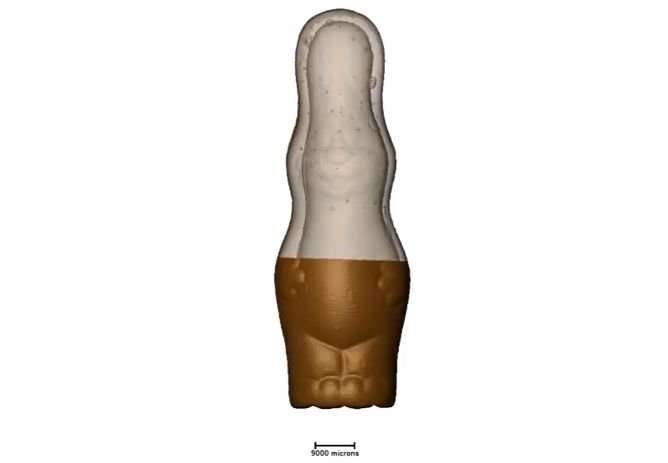Chocolate unwrapped—what's inside your Easter treat?

What happens when you X-ray a chocolate rabbit? How complex is the wafer and chocolate composite of a Kit Kat? And why does the inside of a Ferrero Rocher resemble moon rock?
These are just some of the important, chocolate-related questions scientists at The University of Manchester are answering this Easter.
Using X-Ray Computer Tomography at the University's Manchester X-ray Imaging Facility (MXIF), researchers are creating 3D computer simulation videos of chocolates which show some of your favourite chocolate treats as you've never seen them before.
Dr Tristan Lowe, Senior Experimental Officer at MXIF, said: "Since the 19th century chocolate has become synonymous with Easter. Now in the 21st century we can finally reveal some of its hidden secrets and our analysis has some really interesting findings. Using this technology we can analyse the chocolate at micrometre level—that is a one thousandth of millimetre."
Dr Lowe has produced a series of videos, with accompanying scientific analysis, to reveal over the Easter break. Overall he has X-rayed eight chocolatey favourites. These are a chocolate Easter bunny, Easter egg, a Toblerone, a Crème Egg, a Kit Kat, Maltesers, Ferrero Rocher and a Double Decker.
Some of the results so far have been surprising. For example almost half of a Kit Kat isn't even made out of chocolate. Whilst 53% of the bar is chocolate, its biscuit (18%) and wafer (29%) like structure in centre make up 47%. Interestingly the structure bears many similarities to the rocks that we have been investigating for the extraction of oil and gas.
Dr Lowe explains the comparison: "The interesting part of the Kit Kat bar is the fine wafer structure that can be analysed using a network model similar to that used to understand how the porosity in rocks is connected and this has implications for extraction. In the video the visualised network shows that the wafer is a complex interconnected structure that is fairly uniform in shape."
The porosity in the Yorkie Bar is very different. Its analysis does show it is the densest chocolate bar of those tested. The porosity in the Yorkie bears a close resemblance to the pores found in 3D printed metal components and is the subject of extensive research to eliminate such defects.
Provided by University of Manchester




















